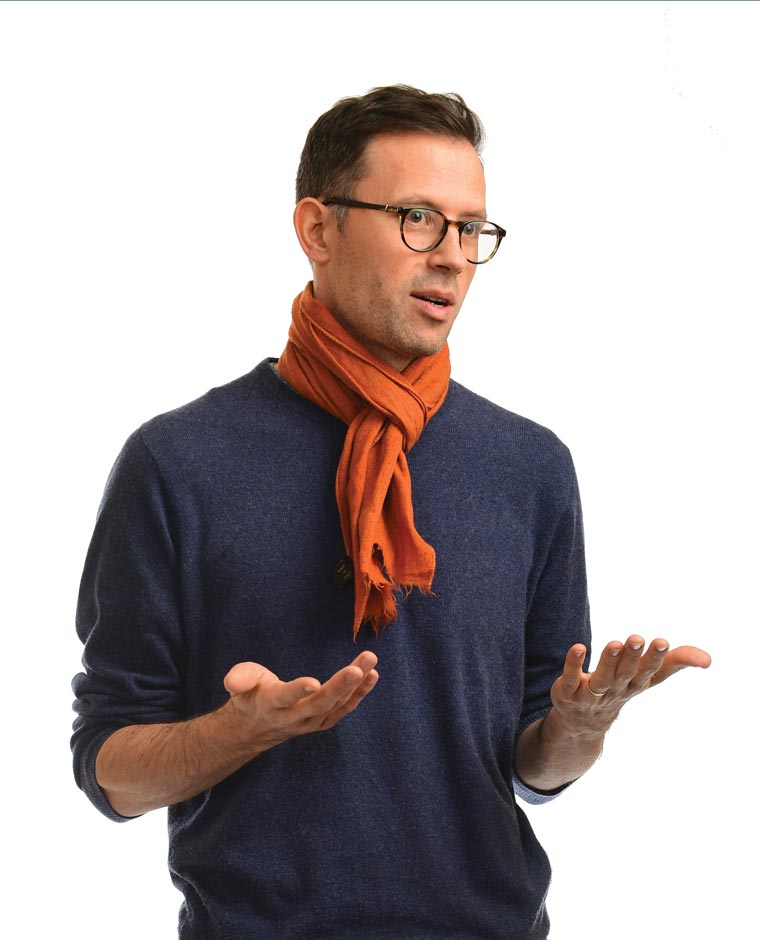Where Art Meets Math
Philip Ording’s First-Year Studies course springs from the intersection of artistic inspiration and advanced mathematics. Go figure.

Like many grad students looking to stretch their stipends, Philip Ording (mathematics) spent time guiding high school students through calculus while he was earning his mathematics doctorate at Columbia. Then he found his way into a different kind of tutoring. Already focused on fields such as geometry and knot theory—what he calls math “with a visual aspect”—he began working with architects and sculptors, helping them translate their ideas into concrete shapes.
From Ording, the artists and architects learned “another language for talking through their work,” he says. “I was sort of like a geometry therapist.” In return, Ording received his intellectual calling: the intersection of mathematics and art.
It’s a field he believes is still being defined, in part through his own work. “Coming to Sarah Lawrence meant trying to map that intersection between mathematics and art in a more serious way than I had the opportunity to do previously,” Ording says. “Here I can teach it, write about it, and, hopefully, contribute to the conversation between artists and mathematicians.”
Students in Ording’s First-Year Studies course, “The New Elements: Mathematics and the Arts,” explore how artists use mathematical concepts to structure their paintings, music, writing, and dance. On the syllabus: minimal composer Steve Reich, postmodern choreographer Trisha Brown, conceptual artist Sol LeWitt, and the French Oulipo writers, who set seemingly arbitrary rules for their novels, such as not using the letter e.
Although students need not have experience in either advanced math or art, enrolling in Ording’s seminar means letting go of many of their preconceptions of both.
“On the one hand, I’m taking away the familiar idea of math as a purely computational activity,” Ording says. “And, on the other, I also want them to expand their view of art.” Students tend to think of art as unfettered personal expression, he says. “It’s hard for some to understand why, in fact, artists would turn to systems that are deliberately constraining, and why that can be so productive.”
One reason Ording designed the yearlong course was to introduce students to interdisciplinary studies early on. “The seminar gives them a chance to use two very different ways of thinking to approach a single problem,” he says. “That kind of experience can help give students the confidence to take intellectual risks in their conference work and maybe also in how they choose their program of study at the College.”
Ording’s own book, 99 Variations on a Proof (published in February), is inspired by the Oulipo writer Raymond Queneau, whose Exercises in Style retold a story in 99 different styles. Ording’s variations on a solution of a cubic equation, each with an explanatory note, run from “one line” and “two-column” to “clever,” “doggerel,” and “psychedelic.” The book attempts to show that ideas of style and cultural influence are as relevant to the work of mathematicians as they are to the creations of artists.
“They’re there, even if it’s harder to draw those lines of influence in mathematics,” Ording says. “Mathematicians don’t usually publish artist’s statements with their research articles.”
Written by Martha T. Moore
Photo by Chris Taggart
